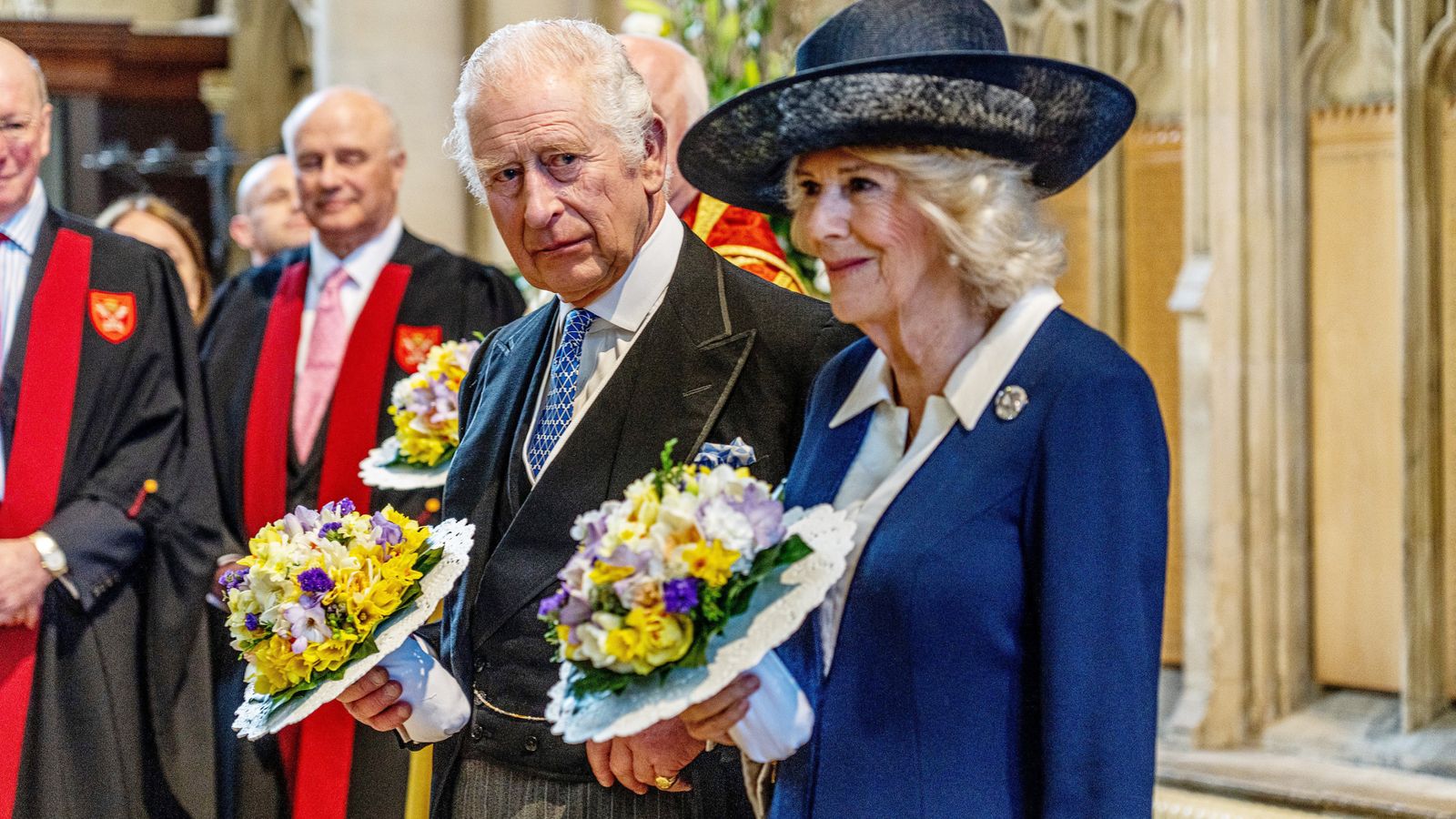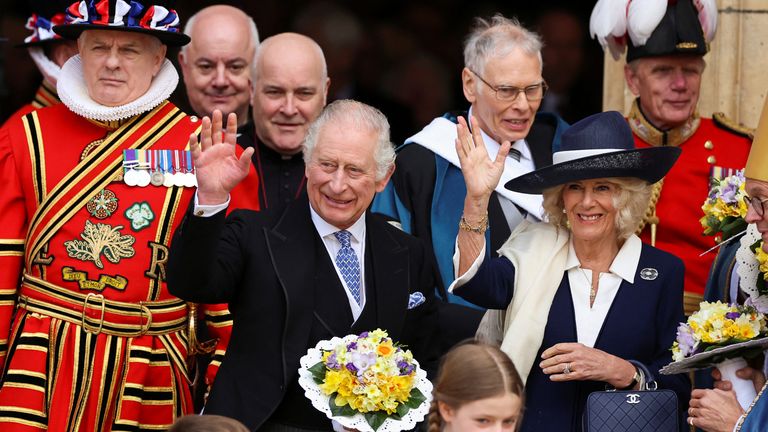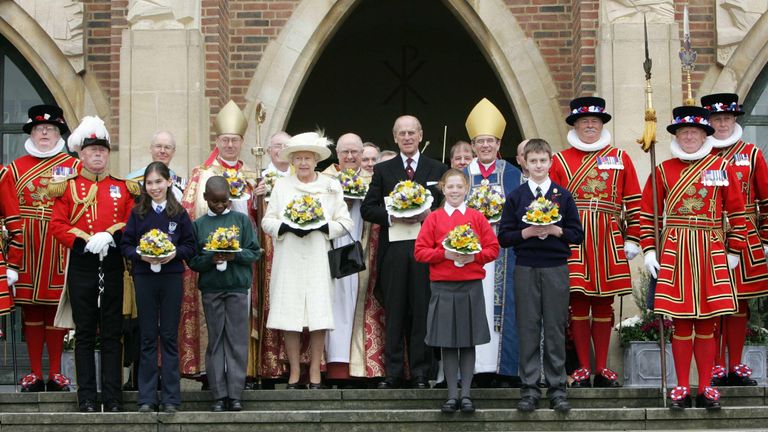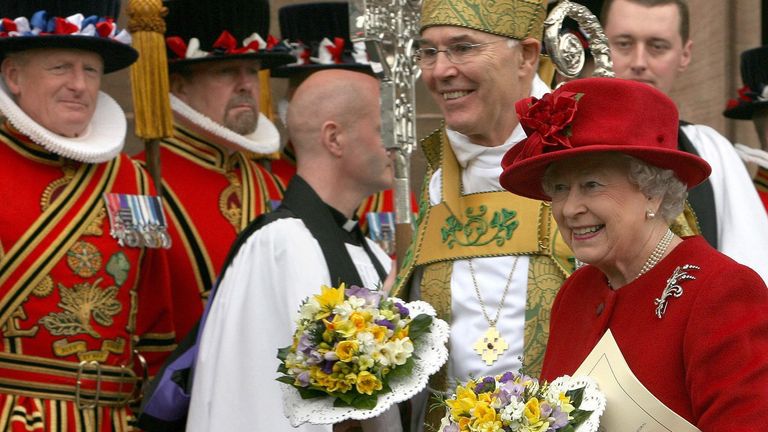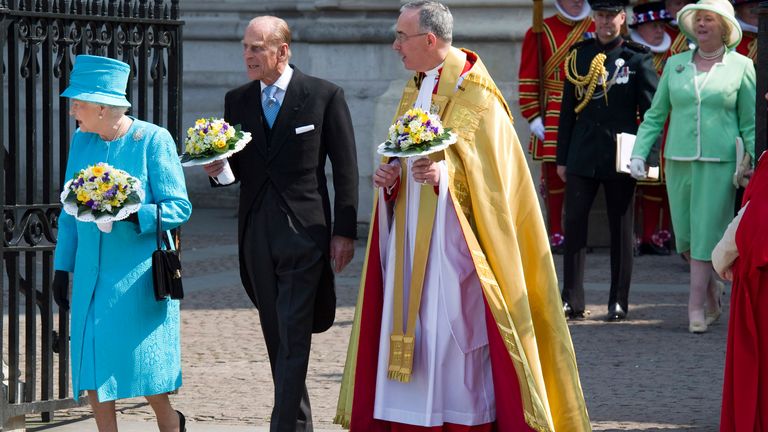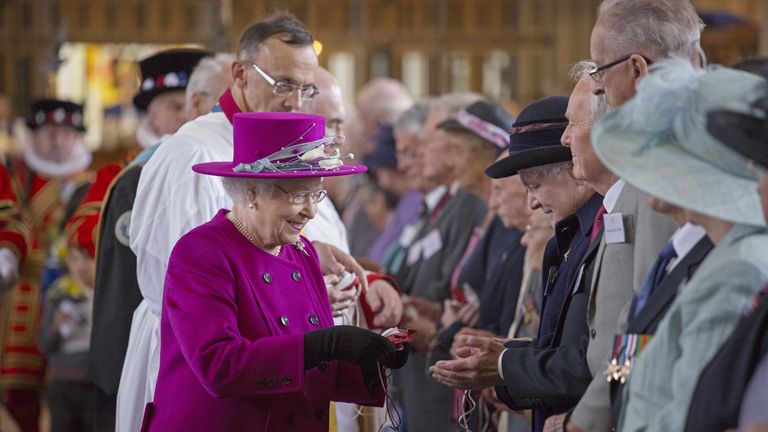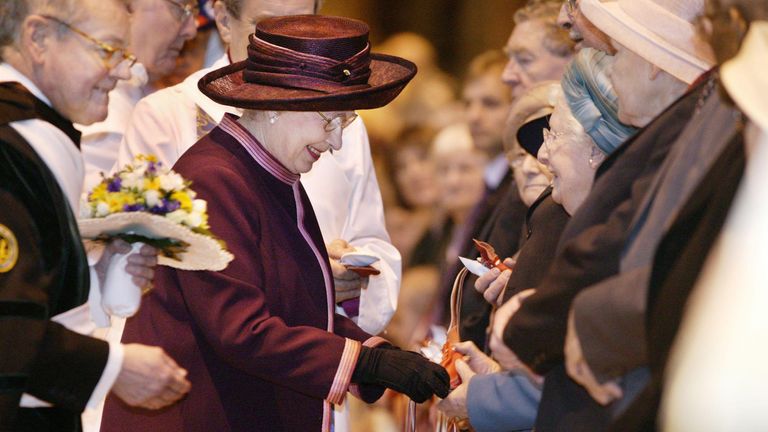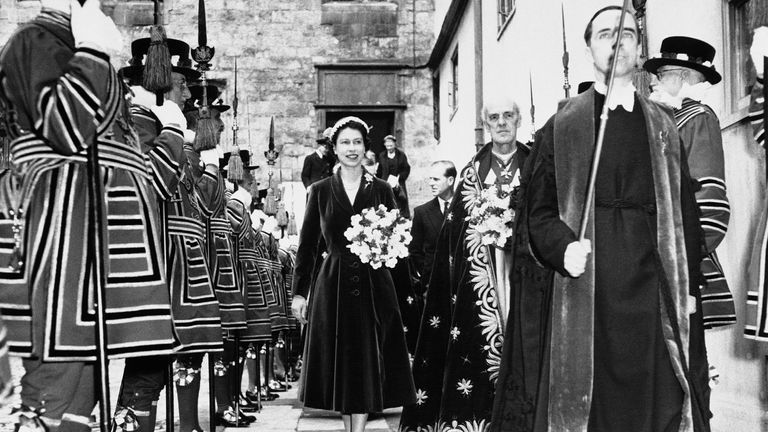Maundy Thursday is a major fixture on the royal calendar – but this year the Queen stepped in for King Charles during the ancient service.
Normally the monarch, who is the head of the Church of England, presents specially minted coins to people recognised for their community service.
As the King continues to undergo treatment for cancer, the Queen attended the annual Royal Maundy Service at Worcester Cathedral and handed out traditional Royal Maundy gifts.
However, a pre-recorded audio message from the King was broadcast at the service, in which he spoke of his “great sadness” at not being able to attend.
He said he was continuing to serve the nation with “my whole heart” in the wake of his and the Princess of Wales’s cancer diagnoses.
The monarch spoke of how Jesus set an “example of how we should serve and care for each other”, and stressed the importance of extending “the hand of friendship… especially in a time of need”.
While the King did not directly refer to his and Kate’s health, his words could be interpreted as reflecting on the nation’s response to the challenges they face while navigating cancer treatment.
This year the Royal Maundy gifts included a £5 coin featuring images of a Tudor dragon and King Charles, and a 50p coin commemorating the RNLI.
What happened last year?
In his first year as monarch, King Charles kept the same tradition as his late mother, presenting pensioners with Maundy money.
At the service at York Minster in 2023, the King and Queen were presented with a traditional nosegay, a small flower bouquet.
The King gave 74 men and 74 women two small purses each – one red and one white – each containing Maundy money.
The number of those taking part reflects the monarch’s age.
The white purse contained a set of specially minted silver Maundy coins – equivalent in value to his age.
The red purse contained two commemorative coins, one representing his 75th birthday, and the other the 75th anniversary of the Windrush Generation, although it usually features ordinary coins symbolising the monarch’s “gift for food and clothing”.
The Holy Week
In Christianity, the days leading up to Easter form part of Holy Week – when people devote their time to worship.
Here are some of the various days that are commemorated during the period in the Christian calendar:
- Palm Sunday
- Maundy Thursday
- Good Friday
- Easter Sunday
What is Maundy Thursday?
It takes place on the Thursday before Easter Sunday each year. The day marks the night of the Last Supper and the day that Jesus celebrated his final Passover with his disciples.
The Last Supper is the final meal Jesus shared with his apostles before his crucifixion.
It is a key date in the Christian calendar, as it marks the end of Lent – a time when many people decide to give up what they love to remember Jesus’s sacrifice.
Maundy Thursday is believed to be the day when Jesus washed his disciples’ feet and commanded them to do the same for each other.
This symbolic act is now carried on in the present day, with religious leaders, like the Pope, traditionally washing and kissing the feet of people – usually church members.
Today the British monarch no longer washes the feet of the needy, as they did in medieval times, with the act replaced by the gifting of coins.
Maundy Thursday, also known as Holy Thursday, derives from the Latin word “mandatum”, which means “command”.
How is it celebrated?
There are many customs and traditions that Christians follow to commemorate the occasion.
In the UK, Maundy money is given as an act of charity and every year, the late Queen would give this to pensioners to mark the occasion.
In recent years, the service has travelled to various cathedrals and abbeys to give gifts to local people.
In 1952, the late Queen marked the Royal Maundy Service for the first time with The Duke of Edinburgh.
At the ceremony, 26 men and women received 26 pence in specially minted Maundy money from the Queen.
The service dates back to 600AD and the “special coins” have kept much of the same form since 1670.
During the royal service, the monarch also holds a nosegay bouquet made up of daffodils, primroses, stocks, purple statice, freesias, ivy and hebe, along with the herbs rosemary and thyme – which is typically given as a gift.
Read more on Sky News:
What is Shrove Tuesday and how is it celebrated?
There is not one specific order in which Maundy Thursday is observed. However, many Christians choose to mark this day in different ways – and these may include:
- Communion services held in churches.
- Seder Supper – a meal eaten on the first night of Passover.
- Tenebrae Service – a religious service held three days before Easter. This is typically held in Western Christianity (one of two sub-divisions of the religion).
- Stripping the Sanctuary – a practice which allows people to prepare for Easter. This involves cleaning the church in silence – a custom which dates back to the seventh century.
The Royal Maundy Service over the years

